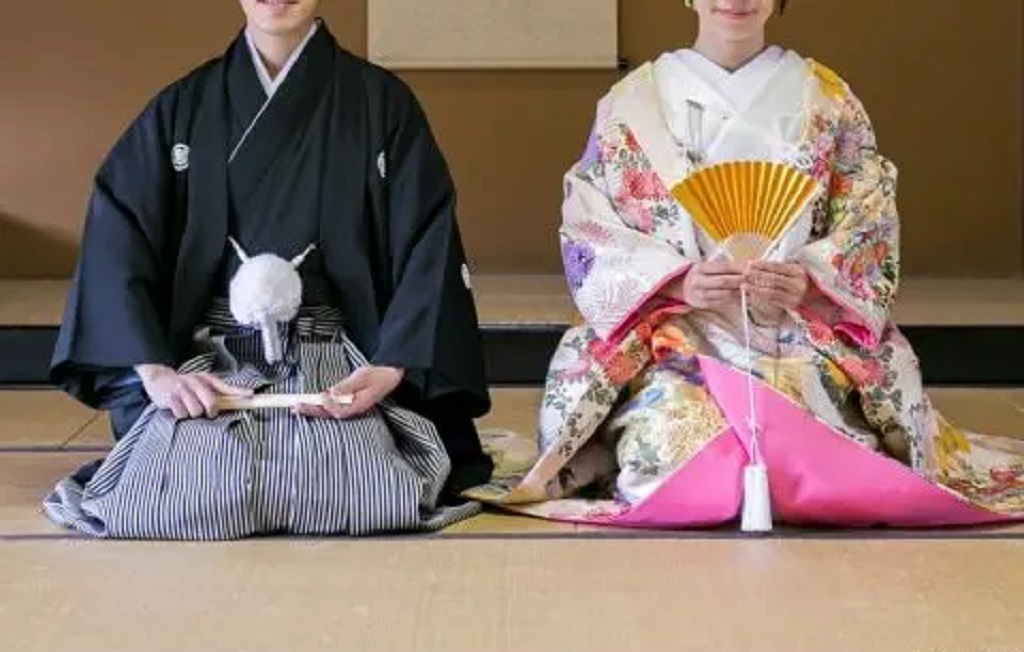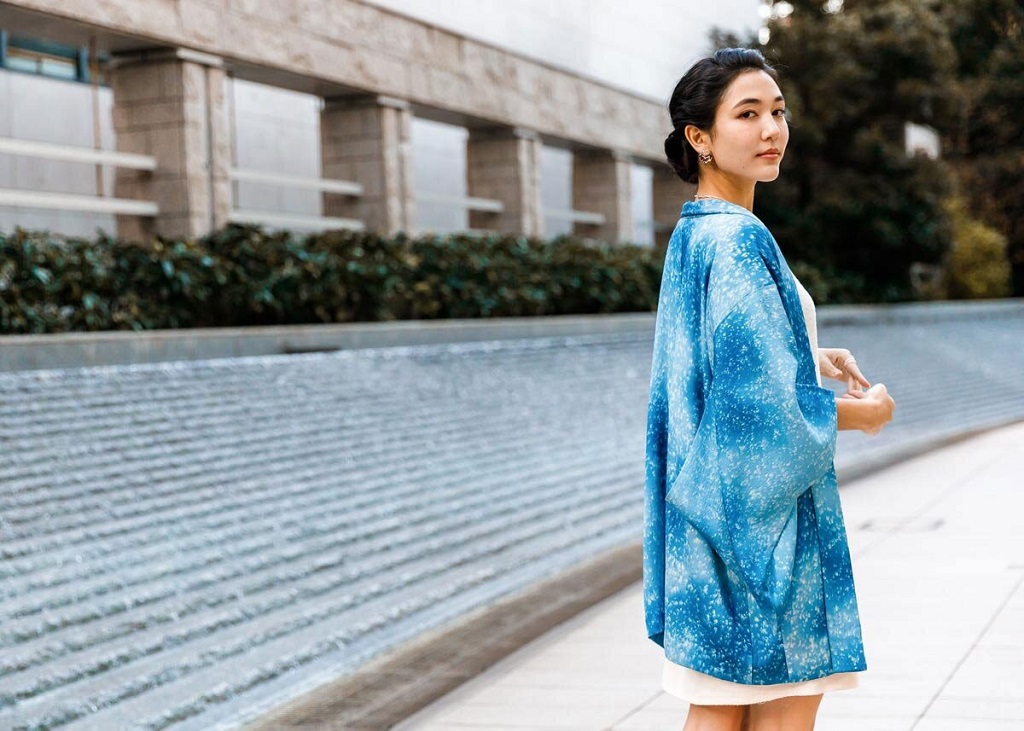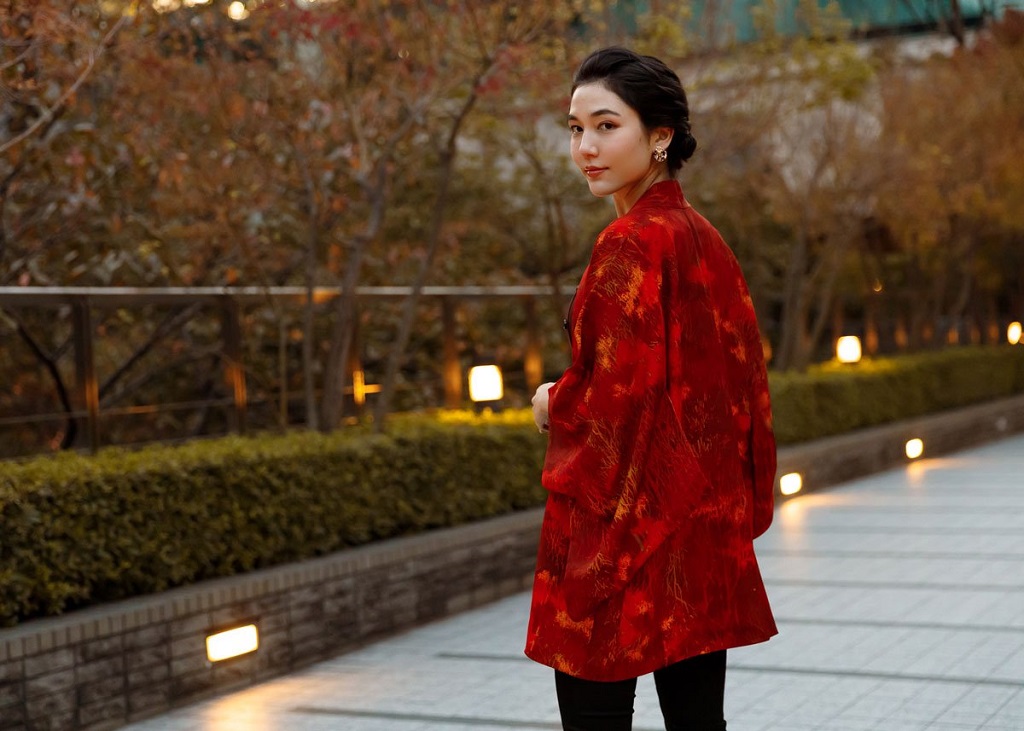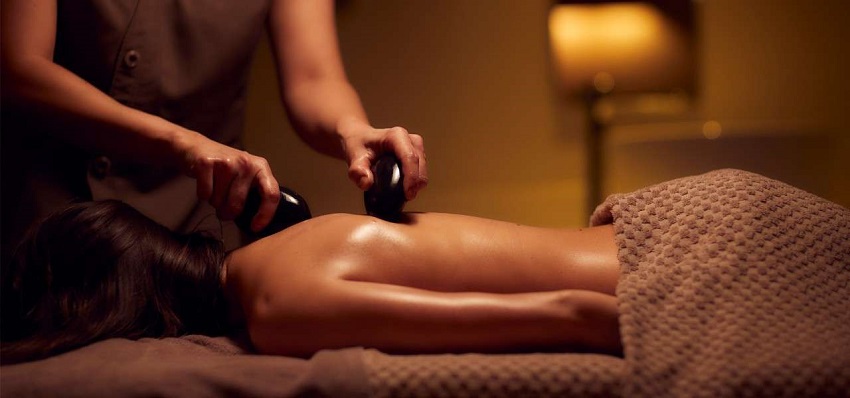The haori is a traditional Japanese garment that has become increasingly popular worldwide. This overcoat-like jacket was originally worn by men in Japan but has been adopted into women’s fashion as well. As interest grows around Japanese culture and style, many women wonder, is it ok to wear a Haori? There are various perspectives on this, but ultimately it comes down to appreciating the cultural roots of the haori while respecting how you style and wear it.
What is a Haori?

First, let’s discuss exactly what a haori is. A haori is a lightweight, kimono-style overcoat that originated in Japan. Some key features of the haori include:
- Hip or thigh-length jacket that loosely drapes over the body
- Kimono-inspired cut with large, draping sleeves
- Typically made of silk, linen or cotton fabrics
- Decorative designs along the sleeves, back and shoulders
- Tied together in the front with tasseled cords called haori himo
- Can be worn over a kimono or regular clothing
In traditional Japanese culture, men wore the haori as everyday outerwear, along with hakama pants. It was commonly worn by samurai over their armor as well. The origins of the haori can be traced back to the Heian period over 1,000 years ago.
The haori became a way to add an extra layer for warmth while also showcasing stylish designs and patterns. They were often made with expensive, high-quality fabrics and intricately decorated to showcase status and wealth.
Over time, the haori was also adopted into women’s fashion in Japan. There are some important distinctions between men’s and women’s haori styles:
Men’s Haori
- Boxy, loose fit through the body and sleeves
- worn with hakama pants
- Simple, muted colors and patterns
- Short cords for tying (30cm or less)
Women’s Haori
- Tailored fit to the body
- Worn over kimono
- Bright colors and bold prints
- Long cords for tying (80cm or more)
- Sleeves are not as oversized
So, in summary, the haori is a historic Japanese garment that has evolved over time in both men’s and women’s fashions. The flowing, kimono-style cut paired with bold patterns and colors makes the haori a stylish statement piece.
Cultural Significance of the Haori
Now that we’ve covered the history and characteristics of the haori, it’s important to understand the cultural significance of this garment in Japan. Here are some of the ways the haori has cultural meaning:
Samurai Status Symbol – As mentioned, the haori was closely associated with the samurai class in medieval Japan. A warrior’s haori quality indicated his status, rank, and wealth.
Indicates Formality – In modern times, Japan’s haori remains associated with formality. It is considered proper attire for formal or ceremonial occasions like weddings, funerals, graduations, etc.
Seasonal & Regional Pride – The intricate Haori designs often display motifs that reflect the season or region where the garment was created. This shows pride in local culture.
Kimono Outerwear – The haori is designed to be worn over the kimono, so it is strongly associated with traditional kimono culture in Japan. It adds a layer of warmth and style.
Respecting Tradition – Following the conventions of properly wearing and styling a haori shows knowledge of culture and respect for tradition in Japan.
As you can see, wearing a haori holds much deeper meaning than just fashion. Respecting the roots of the haori is an important part of cultural appreciation.
Perspectives on Women Wearing Haori
Given the traditional male and samurai roots of the haori, it’s natural to wonder if it is acceptable for women to adopt this garment today. There are a few perspectives on this:
Honoring Tradition – Some traditionalists believe the haori should remain associated with its original purpose on men and that women wearing it is culturally appropriate. They feel strongly that the traditions should be honored.
Cultural Appreciation – A more moderate perspective is that women can respectfully wear haori to appreciate Japanese culture but should avoid turning it into a costume or accessory. Care should be taken to honor the roots.
Fashion Evolution – From a fashion viewpoint, culture evolves over time. Just like jeans transitioned from workwear to everyday fashion, the haori has also evolved from its origins into a modern fashion statement.
Promoting Equality – A more progressive view is that the haori has developed into a gender-neutral garment. Like men adopting the kimono, women wearing haori promotes equality and cultural exchange.
There are good arguments on all sides of this debate. Ultimately, it seems the considerate view is that women can respectfully wear haori while being mindful of its heritage.
Tips for Women Wearing Haori
If you do decide to incorporate haori into your wardrobe, here are some tips on how to wear it appropriately:
- Select authentically made haori – Seek out haori made by Japanese designers and artisans. This supports tradition and avoids cheap knockoffs. Look for high-quality materials like silk, linen or cotton.
- Honor the rituals – Learn how to properly put on and tie a haori. Arrange it properly over your shoulders, tie the cords neatly, and carefully handle the garment.
- Combine mindfully with other clothes – Avoid wearing haori with revealing or disrespectful clothing. For example, pair it with a modest dress instead of a crop top.
- Adapt the lengths if needed – Since women’s haori hits the hip, adjust to a midi or knee length to stay comfortable and modest.
- Add layers respectfully – Feel free to layer a jacket or coat over your haori. Just remove indoor out of courtesy in formal settings.
- Select colors and prints thoughtfully – Stick to traditional women’s haori patterns and colors. Avoid American flag prints, for example.
- Credit inspiration – If you post photos with your haori on social media, acknowledge its Japanese influence. Avoid implying it is your own unique style.
Following these tips will allow you to thoughtfully incorporate the haori in a respectful, appreciated way as a woman.
Examples of Appropriate Haori for Women
To get a better visual idea of how to tastefully style a woman’s haori, here are a few examples:
Casual Daytime Haori Styles
- A knee-length linen haori in pale blue worn over a breezy linen shift dress creates an effortlessly chic daytime look.
- Pairing a silk haori in warm tones of orange and yellow over a beige turtleneck sweater and jeans puts a modern twist on the haori.
- For a more edgy vibe, try layering a black-washed silk haori jacket over an A-line denim skirt and cropped tank top.
Dressing Up a Haori for Night
- Pair a vibrant red silk haori with swirling floral designs over a little black dress for dinner or cocktails.
- Elevate date night with an emerald green haori featuring a colorful phoenix motif over sequined cami and leather leggings.
- Combine a regulating women’s haori for a formal event with a floor-length gown and heels.
As you can see, the boho-chic and artistic vibe of the haori allows many possibilities for everyday, dressy and formal wear with the right pairings. Just maintain a level of respect and avoid costumes.
Common Haori Faux Pas to Avoid
While the haori presents lots of stylish possibilities for women, there are also some faux pas to avoid so you don’t come across as ignorant or inappropriate:
- Wearing a cheap polyester haori from a costume shop meant for Halloween
- Putting on a haori back to front or left over right (opposite of tradition)
- Tying the haori cords into a clumsy bow instead of the proper knot
- Pairing a haori with a tattered band t-shirt and micro mini skirt
- Letting the long sleeves drag on the dirty ground
- Using a Japanese flag printed haori as a 4th of July costume
- Wearing haori sandals, which are only for men with hakama
- Modeling a sexy boudoir photo shoot in just a tied haori and lingerie
Being thoughtful about haori pairings and treating the garment properly will help avoid these offensive mistakes. Educate yourself and ask Japanese friends for guidance.
Haori in Japanese Fashion Shows
If you still question whether it is acceptable for women to wear haori jackets, looking to modern Japanese fashion shows provides a clear answer. Top Japanese designers frequently incorporate the haori into women’s collections, mixing tradition with innovation.
For example, internationally renowned designer Rei Kawakubo of Comme des Garcons has styled exaggerated, avant-garde takes on the haori over the years. She respects the roots but pushes boundaries.
Famous luxury brand Issey Miyake is renowned for blending Japanese tradition with ultramodern style. Many of the brand’s ready-to-wear collections feature male and female models in reinvented haori designs.
At Tokyo Fashion Week, global Japanese brands like Facetasm and Anrealage showcased women’s haori styles, worn with everything from ball gowns to jeans. The designers skillfully maintain ties to tradition while placing the haori in a contemporary context.
So we can see that top Japanese designers fully endorse and encourage women to embrace wearing the haori jacket creatively. It honors the spirit of Japanese fashion evolution as long as it is done tastefully and without costuming.
Examples of Women Styling Haori Fashionably

Beyond the runways, many chic everyday women and fashion influencers have adopted the haori into their wardrobes. When styled thoughtfully, they can appreciate Japanese style while still showing their flair.
For example, fashion bloggers often style custom printed or vintage silk haoris over relaxed jeans and a white tee for an effortless vibe. Others add an urban edge by layering tailored haori over leather jackets and edgy booties.
Celebrities like Rihanna and Kendall Jenner have also rocked designer haoris, whether dressed up with gowns or ultra casual with sweatpants. Their global platform spreads appreciation for the versatility of the haori.
But you don’t need paparazzi or sponsorships to start sporting haori fashions yourself. Add a linen or silk haori over your favorite blouse or sundress for an instant dose of Japanese-inspired elegance.
The key is honoring the haori’s heritage while making it work for your personal style. There are no strict rules. Younger generations in Japan now even casually wear haori with T-shirts, pairing tradition with modern life. Find what feels right for your own interpretation.
Haori for Men
While this article has focused on women wearing haori, it’s important to acknowledge the haori’s origins as a men’s garment. Here are quick tips for men interested in sporting traditional haori style:
- Stick to the boxier, oversized fit originally designed for samurai armor
- Opt for muted, earth-toned colors instead of bright prints
- Wear with hakama pants to complete the traditional look
- Tie cords low, around the hip level as done traditionally on men’s haori
- Add haori sandals and tabi socks for the full effect
Of course, modern Japanese men also design and wear inventive variations of haori style. But starting with a traditional masculine cut and colors pays respect to the roots of this garment.
Whether you are a man or woman or anywhere along the spectrum, the guidelines in this article aim to provide knowledge so you can thoughtfully incorporate the haori into your wardrobe in a way that honors Japanese culture.
FAQs
Q: Should a woman wear haori with a kimono?
A: Traditionally, haori were worn by Japanese men and women over kimonos. So wearing a haori jacket over a kimono is appropriate for women who honor tradition. Select colors and patterns that complement each other.
Q: Can I wear a yukata with haori?
A: A yukata is a casual, cotton summer kimono. Since the haori was designed as kimono outerwear, it also looks beautiful paired with a yukata. This makes a great summer festival outfit.
Q: What is haori etiquette?
A: Proper haori etiquette includes tying it correctly left over right, arranging it properly over shoulders, handling the garment and sleeves carefully, and pairing it respectfully with coordinated clothing.
Q: Should I buy a men’s or women’s haori?
A: The differences in sizing and fit make men’s and women’s haori noticeably different. Buy a style designed specifically for women for the best fit. However, women can modify a man’s haori to fit if needed.
Q: Can I wear haori if I’m not Japanese?
A: Haori originated in Japan but has become a global fashion piece anyone can appreciate. As long as you educate yourself on the tradition and avoid turning it into a costume, it is respectful to embrace haori style.
In Closing
I hope this breakdown has helped answer the question, “Is it okay for women to wear a haori?” While opinions vary on this, the consensus seems to be that thoughtfully embracing haori style as a woman is a respectful way to appreciate Japanese culture.
Of course, context and intention matter greatly. Strutting into the night with confidence, learn how to wear a hot pink party dress effortlessly, but always remember, unlike costuming a sexy geisha look with a cheap polyester haori for Halloween, understanding and respecting cultural context is essential for tasteful and inclusive fashion choices.”. Conversely, carefully integrating a refined haori into your everyday style shows sophistication and global awareness.
Now explore integrating beautiful Japanese textiles like haori jackets into your wardrobe! Kampai (cheers) to the cultural exchange through fashion!





